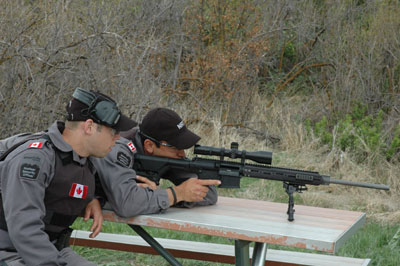Bruce Power SWAT team hits the mark
25 June 2009
Security combat teams from nuclear-related sites and organizations performed well in the 2009 US National SWAT Championships (USNSC).
 |
| Members of the winning team in action (Image: USNSC) |
The championship was held on 18-20 June at the US Shooting Academy in Tulsa, Oklahoma. Eighteen tactical teams including three international entrants participated in a range of trials such as 'Bus Assault', 'Multi-Gun Shootout' and 'Taser Team Takedown'.
The nuclear response team from Canada's Bruce Power won the contest for the second year in a row. They were followed by a team from the German counter-terrorist unit (GSG-9), with nuclear-related teams from Lawrence Livermore in California and Hanford in Washington coming in third and fourth.
Duncan Hawthorne, president and CEO of Bruce Power, commented: "This team is a credit to our company and have demonstrated great pride, dedication and integrity en route to this championship."
Team coach John Latouf said, "The fact that four of the eight members were rookies at this competition speaks volumes for the program we've developed." He added, "Competitions like this continue to help us benchmark ourselves against the best tactical teams in the world."
SWAT competitions have been held in the Shooting Academy for over 25 years. In general, they are based on real tactical policing skills (individual and team) and involve demanding physical challenges as well as precise shooting skills. Most are coupled with training sessions and last from 2-5 days.
The inaugural USNSC were held in 2007 at the Highlands Ranch Law Enforcement Training Centre (HRLETC) outside Denver, Colorado. The objective of the USNSC competition is to use live-fire SWAT scenarios and relays to test individual and team skills. The competition events are designed to provide a fair and equal opportunity for teams to demonstrate their abilities in three areas: team organization, weapons skills and fitness while negotiating courses of fire in a safe manner.
The USNSC normally consists of eight live-fire events run with teams running each course of fire head to head. Officers compete in full tactical gear and are only given one round for each assigned target. Scoring is based on time and target hits.